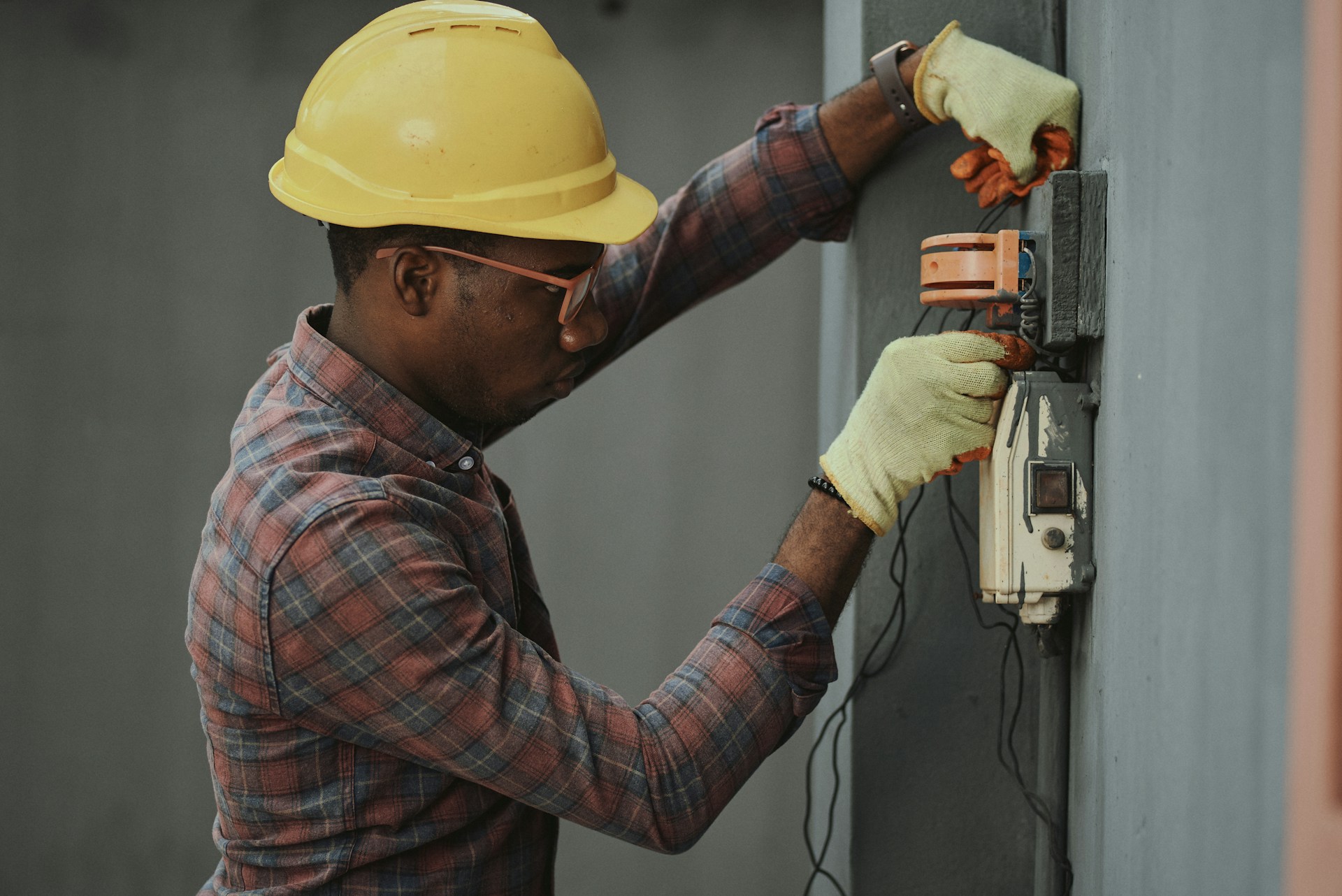
Upgrade your home’s electrical system intelligently during a remodel. Prioritize safety by shutting off power and using insulated tools. Check for damage and ensure proper grounding. Upgrading wiring to meet modern demands enhances safety, efficiency, and connectivity for smart devices. Opt for energy-efficient LED or CFL lighting, and consider dimmer switches for savings. Integrate smart home technology for remote control and energy efficiency, consulting a professional for installation. Choose outlets wisely based on electrical needs and environment, with GFCI for wet areas and surge protection for electronics. Make informed decisions to optimize your living space with electrical upgrades.
Electrical Safety Precautions
When tackling home remodels, remember to prioritize electrical safety precautions to ensure a secure and efficient project execution. Begin by shutting off the power to the area where work will be done using the circuit breaker or by removing the fuse. This step is crucial to prevent any accidental electrical shocks or fires while working on the remodel. Additionally, always use insulated tools to minimize the risk of electrical accidents. Inspect all electrical cords and wires for any signs of wear or damage before using them, and replace if necessary. Ensure that all outlets and switches are properly grounded to avoid electrical hazards. It is essential to follow local building codes and regulations when making any electrical modifications during a remodel. Lastly, if you are unsure about any electrical work, do not hesitate to contact a qualified electrician for assistance. By following these safety precautions, you can ensure a smooth and secure home remodel project.
Upgrading Electrical Wiring
Consider upgrading your home’s electrical wiring to enhance safety and efficiency during your remodel project. Upgrading the wiring in your home can provide several benefits. First, older wiring systems may not be equipped to handle the increased electrical demands of modern appliances and technology, leading to potential safety hazards such as overheating and electrical fires. By upgrading your wiring, you can ensure that your home is equipped to handle these demands safely.
Additionally, upgrading your electrical wiring can improve the overall efficiency of your home’s electrical system. Newer wiring systems are designed to minimize energy loss, which can help reduce your electricity bills in the long run. Moreover, updated wiring can also provide better connectivity for smart home devices and systems, enhancing the functionality of your home.
When upgrading your electrical wiring, it is crucial to hire a qualified electrician to ensure the work is done safely and up to code. They can assess your current wiring, recommend necessary upgrades, and perform the installation with precision and expertise. By investing in upgrading your electrical wiring, you can enhance the safety, efficiency, and functionality of your home.
Installing Energy-Efficient Lighting
Upgrade your home’s lighting system to energy-efficient options to enhance cost savings and sustainability. Consider replacing your traditional incandescent bulbs with LED or CFL lighting. LED lights use significantly less energy and last much longer than incandescent bulbs, making them a cost-effective choice in the long run. CFL bulbs are also energy-efficient and provide a similar level of brightness to incandescent bulbs. When selecting energy-efficient lighting, look for products with the ENERGY STAR label, ensuring they meet high-quality and efficiency standards.
Another option to consider is installing dimmer switches, which allow you to adjust the brightness of your lights according to your needs, saving even more energy. Additionally, motion sensor lights can automatically turn off when no movement is detected, further reducing energy consumption. For outdoor lighting, consider solar-powered options to harness renewable energy and minimize electricity usage. By upgrading to energy-efficient lighting solutions, you can lower your electricity bills and reduce your environmental impact.
Smart Home Technology Integration
To enhance your home’s electrical capabilities, integrating smart home technology offers advanced control and automation features for modern living. Smart home technology allows you to remotely monitor and control various aspects of your home, such as lighting, heating, security cameras, and even appliances, through your smartphone or voice commands. By incorporating smart devices like smart thermostats, smart light bulbs, and smart plugs, you can create a more energy-efficient and convenient living space.
When integrating smart home technology, it is crucial to ensure compatibility among different devices and systems to guarantee seamless operation. Establishing a robust and secure network infrastructure is essential to support the communication between devices and to protect your data and privacy. Additionally, consider consulting with a professional electrician to properly install and configure the smart home devices, ensuring they function optimally and safely within your electrical system.
Choosing the Right Electrical Outlets
For optimal electrical efficiency in your home remodel, prioritize selecting the appropriate types of electrical outlets based on your specific needs and usage requirements. Begin by assessing the electrical demands of each area in your home to determine the necessary outlet configurations. For high-traffic areas such as kitchens, consider installing GFCI outlets to protect against electrical shocks in wet environments. USB outlets are convenient for charging devices without the need for adapters. In home offices or entertainment spaces, installing outlets with built-in surge protection can safeguard sensitive electronics. For outdoor areas, weather-resistant outlets are essential to withstand varying weather conditions. Additionally, tamper-resistant outlets are recommended to enhance safety, especially in homes with young children. Prioritizing functionality and safety when choosing electrical outlets will ensure that your home remodel meets both your current and future electrical needs efficiently and effectively.







